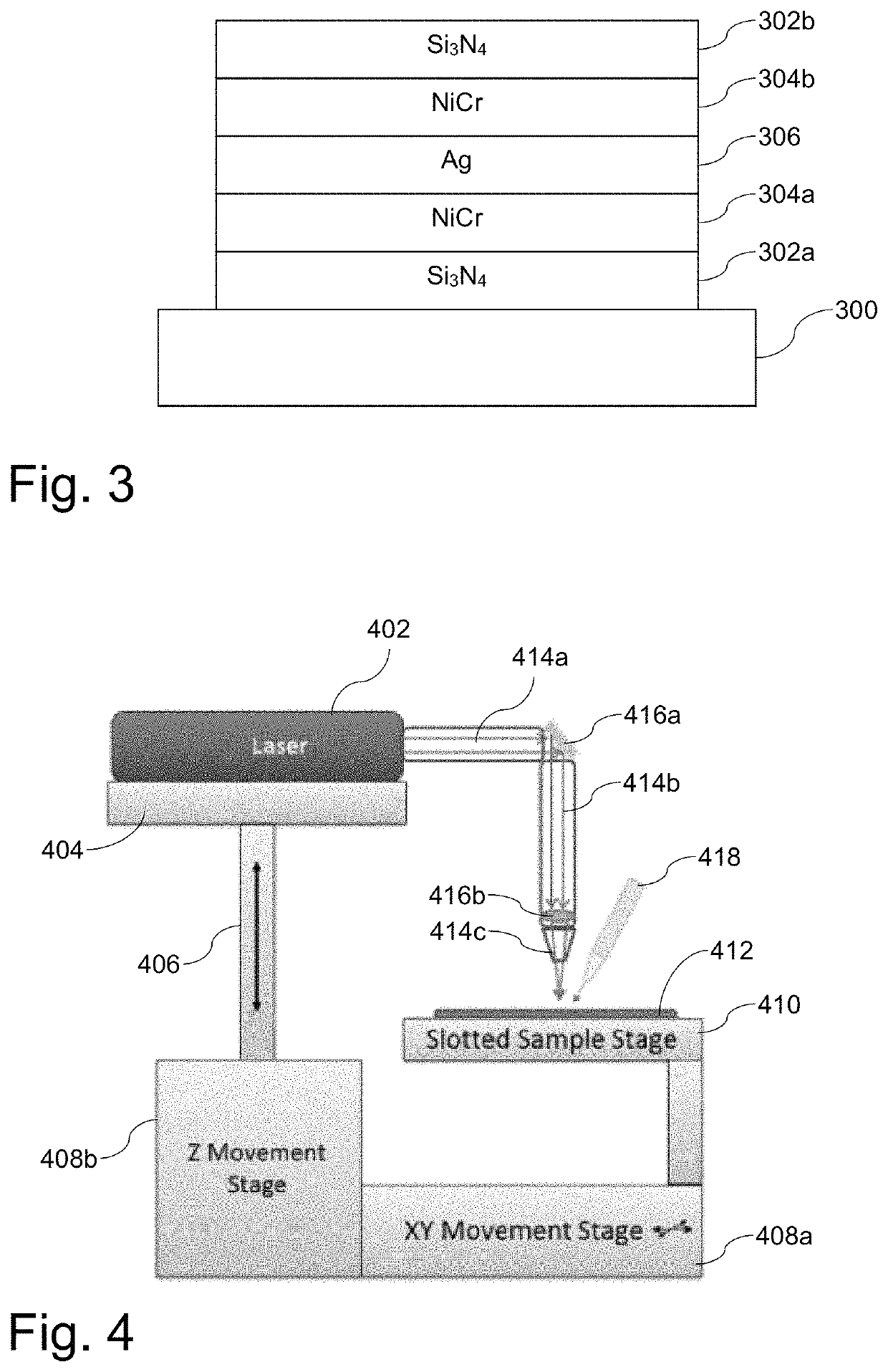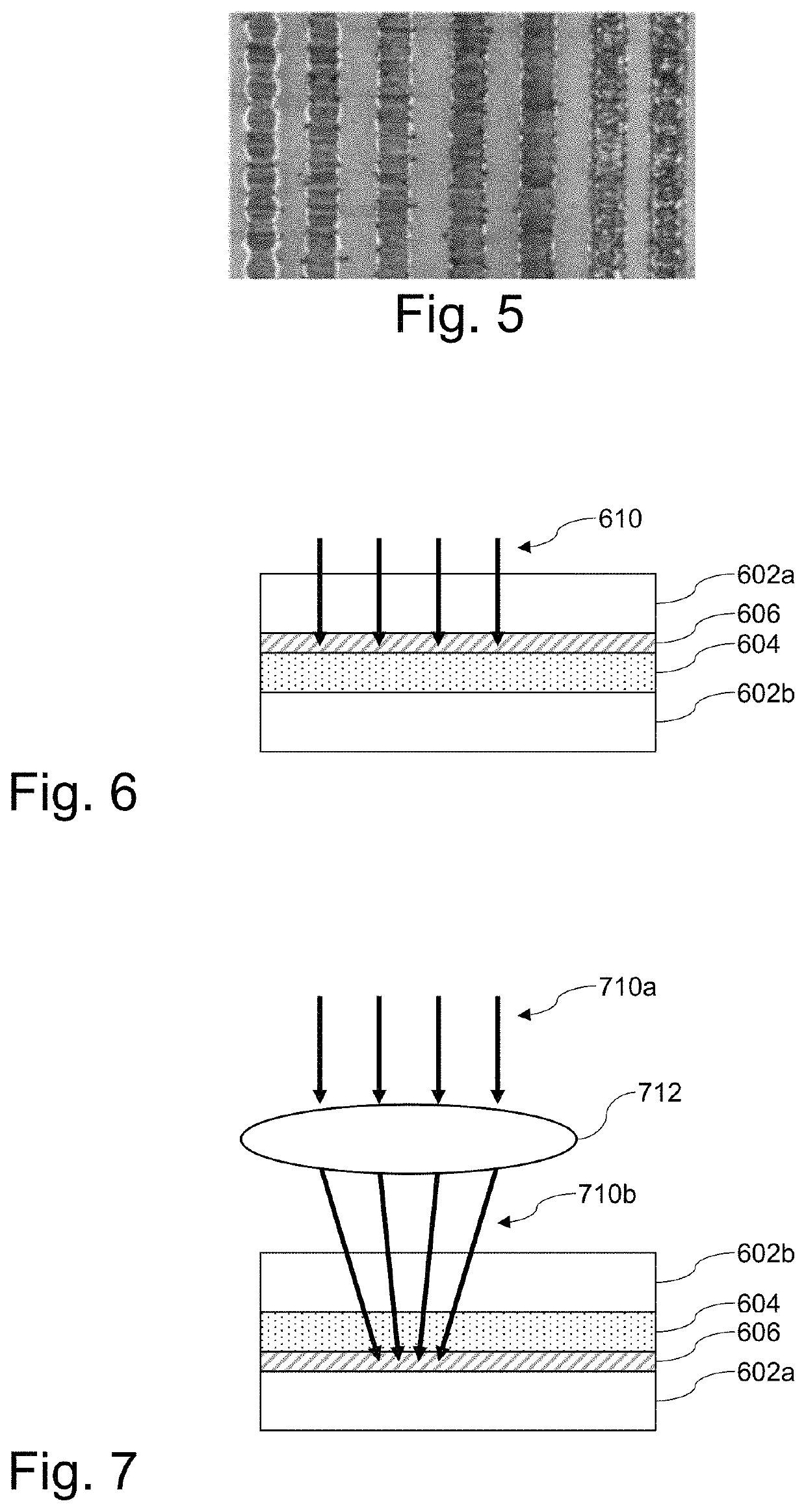Method of making insulated glass window units
a technology of insulated glass and window units, applied in the field of making insulated glass window units, can solve the problems of ionized moisture ingress, corrosion of laminated metal layers inclusive thin films, and gradual corrosion from the edge to the center of the lite, and achieve the effect of increasing the electrochemical corrosion resistance of the coating
- Summary
- Abstract
- Description
- Claims
- Application Information
AI Technical Summary
Benefits of technology
Problems solved by technology
Method used
Image
Examples
example 1
[0045]
PreferredMore PreferredExampleLayerThickness (nm)Thickness (nm)Thickness (nm)Si3N4 (302b)385-525405-505455NiCr (304b)20-3022-2825Ag (306) 95-135100-130115NiCr (304a)30-5035-4540Si3N4 (302a)110-150115-145130Glass (300)N / AN / AN / A
example 2
[0046]
PreferredMore PreferredExampleLayerThickness (nm)Thickness (nm)Thickness (nm)Si3N4 (302b)435-595460-570515NiCr (304b)25-3527-3330Ag (306)105-145110-140125NiCr (304a)20-3022-2825Si3N4 (302a)235-325250-310280Glass (300)N / AN / AN / A
example 3
[0047]
PreferredMore PreferredExampleLayerThickness (nm)Thickness (nm)Thickness (nm)Si3N4 (302b)360-490380-470425NiCr (304b)30-5035-4540Ag (306)55-7558-7265NiCr (304a)35-5540-5045Si3N4 (302a)260-360280-340310Glass (300)N / AN / AN / A
[0048]Considering the three examples above, Example 3 has the thickness undercoat (e.g., the layer comprising Si3N4 302a), and it seemingly has the greatest propensity for corrosion. Example 1 has the thinnest undercoat (e.g., the layer comprising Si3N4 302a), and it seemingly smallest propensity for corrosion. There are, however, additional or alternative hypotheses as to why these phenomena are encountered. First, it is possible that the undercoat (e.g., the layer comprising Si3N4 302a) in Example 3 may be rougher than the corresponding layers in the other coatings, potentially caused by its greater thickness, and potentially leading to poorer interfacial adhesion and in turn leading to corrosion more easily. Second, there may be greater tensile strength in ...
PUM
| Property | Measurement | Unit |
|---|---|---|
| width | aaaaa | aaaaa |
| thicknesses | aaaaa | aaaaa |
| transparent | aaaaa | aaaaa |
Abstract
Description
Claims
Application Information
 Login to View More
Login to View More - R&D
- Intellectual Property
- Life Sciences
- Materials
- Tech Scout
- Unparalleled Data Quality
- Higher Quality Content
- 60% Fewer Hallucinations
Browse by: Latest US Patents, China's latest patents, Technical Efficacy Thesaurus, Application Domain, Technology Topic, Popular Technical Reports.
© 2025 PatSnap. All rights reserved.Legal|Privacy policy|Modern Slavery Act Transparency Statement|Sitemap|About US| Contact US: help@patsnap.com



